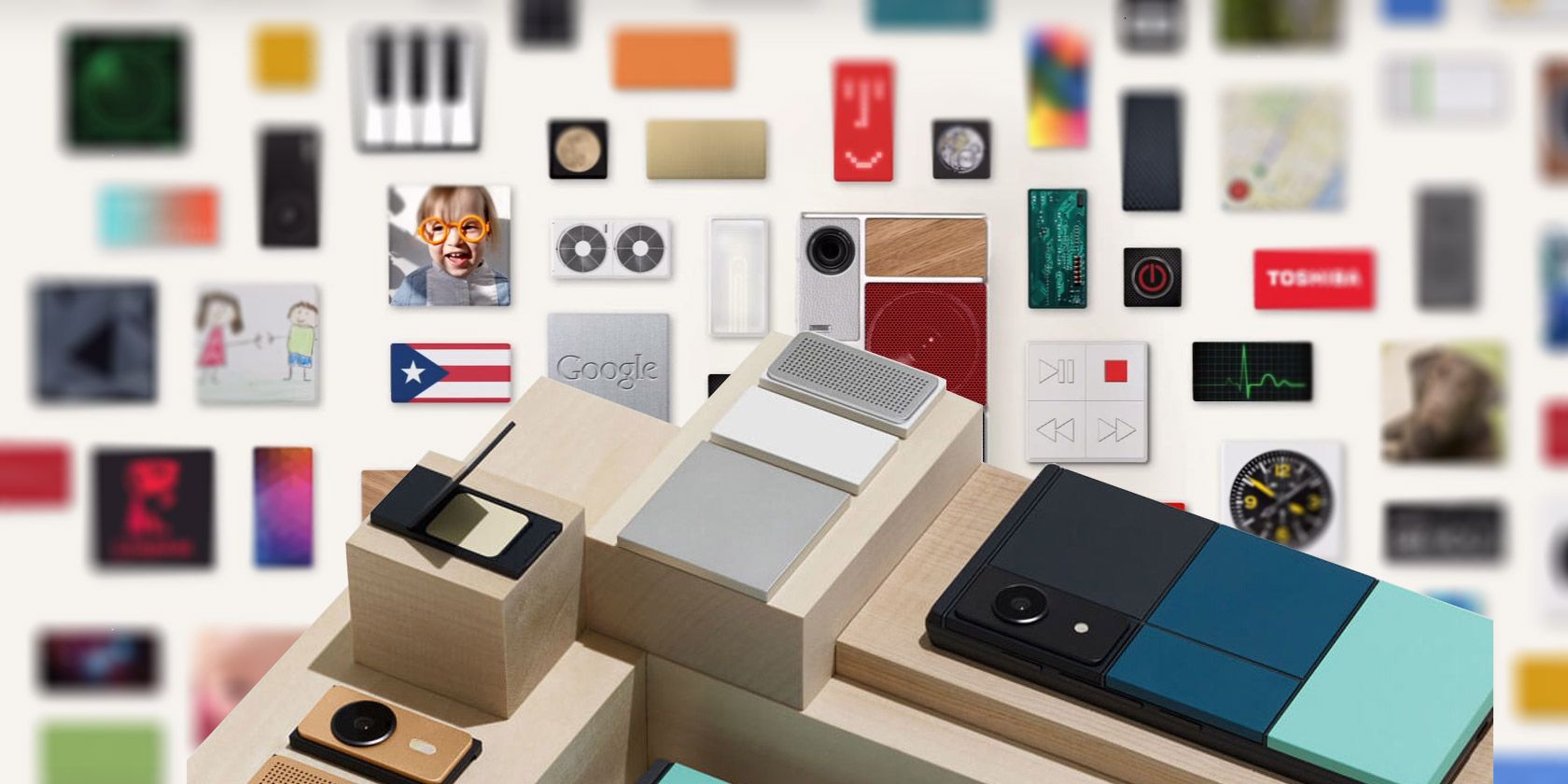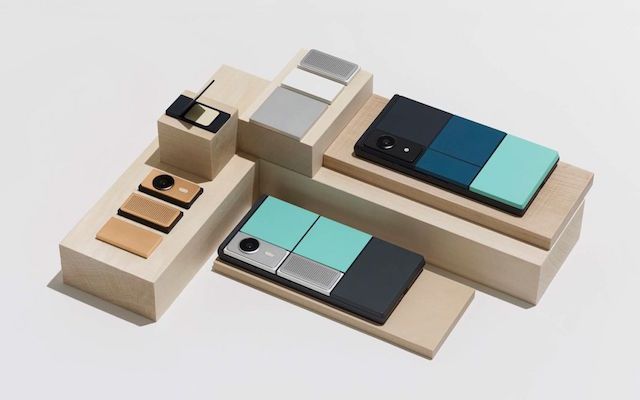Project Ara is perhaps the most exciting thing happening in smartphones at the moment. Ara is Google's attempt to make a "modular smartphone", which means that the user can add, remove, or replace parts on the phone at will.
But Ara is only the tip of the iceberg.
Google isn't the first to attempt modular smartphones, nor is it the only one still doing it -- but it is at the forefront of the new tech. Still, several other companies have different philosophies about modular phones and are approaching the concept in their own way.
What binds them together is the idea that it should be easy for a user to add or remove extra functionality to a phone.
It All Started With Modu
The first company to seriously take up the cause of modular phones was Modu, founded by Dov Moran, the inventor of the USB memory stick (a technology that is still relevant today).
It's important to note that when Modu started in 2007, it wasn't looking at smartphones or pocket PCs. Instead, it focused on adding "smart cases" to dumb phones.
For example, the Modu 1 was a simple small phone by itself. You could then slip it into different types of cases to add functionality. You could add a QWERTY keyboard instead of a numpad, a speakers module to listen to music, and so on.
Modu didn't take off, eventually shutting down in 2011. Its patents were bought by Google.
The First "Layered" Phone
In late 2014, Lenovo was the first to launch a modern smartphone that had some sort of modular benefits. The Lenovo Vibe X2 came with "layers" -- a series of covers specially designed for the phone, which could add different functions. It's a bit like how smart covers turn tablets into laptops.
For example, the Vibe X2 Speaker was made in association with JBL to provide a set of strong speakers with a kickstand. There was also a battery layer that boosted the battery life by double.
Of course, none of this actually let you change the smartphone itself, which was restricted to what you got out of the box. However, as a precursor to modular phones, Lenovo's device was an important milestone.
The Latest Modular Phone: LG G5
Much like the Lenovo Vibe X2, the LG G5 comes with add-on modules too. But even though it launched years later, the philosophy of the G5 is the same: the smartphone stays unchanged while you snap extra units on or off.
For example, the LG CAM Plus adds a more powerful camera module with a shutter, hand grip, zoom dial, and record button. Similarly, the LG Hi-Fi Plus -- made in association with Bang and Olufsen -- adds an amp and a digital audio converter to your smartphone (for high quality song output).
Again, the G5 isn't going to let you change your battery to add a higher capacity battery or swap out an 8MP camera for a 13MP camera. It's more like Lenovo's layers than Google's Ara, which we're coming up on.
Fairphone: Truly Modular and Ethical
It's the first phone to receive 10/10 from iFixit for its repairability, which speaks volumes about Fairphone. You can take the entire phone apart and put it back together, and all you need to do it is a single screwdriver.
Fairphone's approach to making a phone is about ethics. It sources conflict-free minerals and materials from places where it knows the labor isn't being exploited -- a stark contrast to companies like Apple and the deplorable conditions in their Chinese factories.
More importantly, Fairphone wants you to be able to fix things yourself.
Smartphones are fragile. The screen can break and you'll have to shell out a large amount to get it replaced. Batteries deteriorate with age, but try getting it replaced for cheap. (Good luck.) Fairphone puts all these options back in the user's hands.
The main core module (which has the PCB, antennae, and ports) costs about $350, the screen costs just about $100, while the battery costs about $25. You can buy any of these, or other items, separately and place them in your smartphone on demand.
We weren't too impressed with the first Fairphone (read our review) but Fairphone 2 seems like a far better device on paper. Fairphone hasn't announced yet whether it will release different types of parts that can fit into the phone, so it's aimed more at repairing than modifying your phone.
Google's Project Ara: The Next Step
All of these previous modular smartphones show why Google's Project Ara is so important.
Google has apparently been working on Ara for quite a while, envisioning how a truly modular smartphone should work, and has finally progressed enough to announce that the Developer Edition of Ara will be available later in 2016.
There's a "base unit" that consists of your screen, PCB, and other internal components like processor and RAM. The back is also made up of removable modules.
Add a camera module to click photos. Remove it and replace it with the E-ink reader module to read a book without taking up too much battery. The possibilities are endless, at least in theory.
There are six module slots on the Ara, which you can release from the phone with ease. The open-standard UniPro port will let anyone make modules, so it's easy to snap and release without worry of stuff breaking. Wired, which got a sneak peek at the phone, describes how it works:
Press a button on the right side of the phone to bring up a map of all your modules, tap on the picture of the one you want to release, then flip over your phone. A moment later, it releases. Or do it like Camargo (Ara's technical project lead) and say, "OK Google, eject the camera."
And Ara will go beyond the basic smartphone-centric modules alone. It won't just be about a better camera or more battery life. Google envisions instant blood tests, and sensors to monitor air quality, among other uses.
The Ara Still Has One Big Flaw
Despite all the strides it has made, Project Ara still has some flaws in making sure it has a long life. For starters, the base unit can't be upgraded so you're stuck with the same processor + RAM + screen combination even if technology moves ahead.
"The 6 little blocky modules on the back of the phone are just add-ons like better cameras, speakers, scanners, etc. Things to customize your phone, for fun," criticizes Hakken.
"It means your phone still gets obsolete after a while. What if your screen breaks? Well you still need to replace the entire phone. And after a couple of years it gets slow and you need to replace your entire skeleton."
This is a big deal. The modular Ara is letting you change things that aren't essential to the smartphone experience, but it keeps the important parts still in the hands of the manufacturer. What's the longevity of the phone then? Hopefully more than a few years.
Ara vs. Fairphone: Which Is Better?
The philosophical battle of modular phones comes down to a fight between Ara and Fairphone. Ara has Lenovo, LG, and others like it on its side, which believes "modular" means adding and removing parts to gain functions that a smartphone does not otherwise have.
Fairphone, on the other hand, believes "modular" means being able to replace core elements of a smartphone so that it doesn't get outdated as technology progresses.
Which side are you on? What's your definition of the "modular" philosophy? And since Fairphone is already available while Ara will be available soon, which of the two will be your next smartphone?


